Seven M-class solar flares erupt from Region 2644
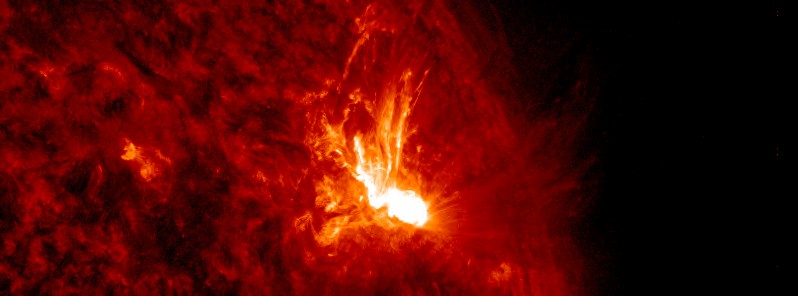
Departing Active Region 2644 erupted with seven M-class solar flares since late April 1, 2017. The series started with M4.4 on April 1 and was followed by M5.3, M2.3, M2.1 and M5.7 on April 2, and M1.2 and M5.8 on April 3. Multiple coronal mass ejections were associated with those events but none of them is expected to be Earth-directed. The region is about to begin its far side rotation but we still might see some action from it today and tomorrow.
The M4.4 event started at 21:35 on April 1, peaked at 21:48 and ended at 22:05 UTC. It was the first M-class solar flare since November 29, 2016 and the strongest since M5.5 on July 23, 2016.
A Type IV Radio Emission was registered at 21:50 UTC. Type IV emissions occur in association with major eruptions on the Sun and are typically associated with strong coronal mass ejections (CMEs) and solar radiation storms. However, the plasma cloud appears to be headed to the northwest and away from our planet.
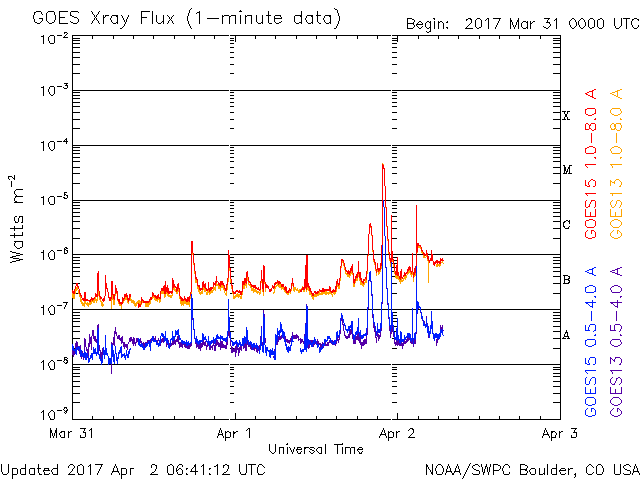
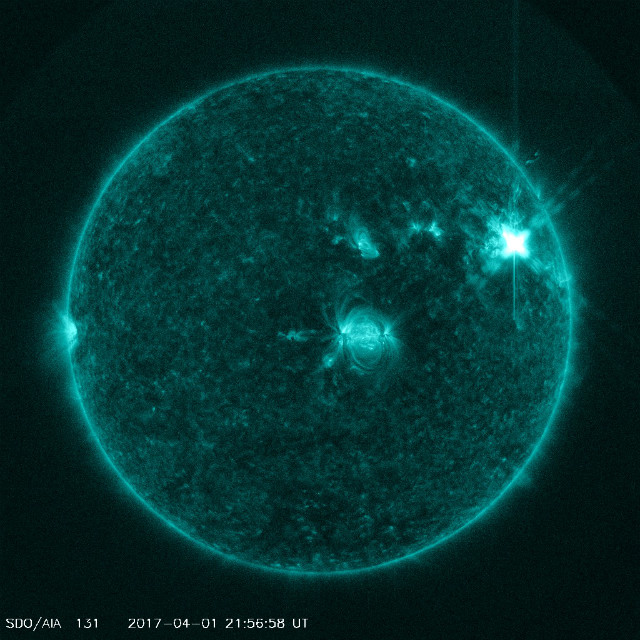
M4.4 solar flare on April 1, 2017. Credit: NASA SDO/AIA
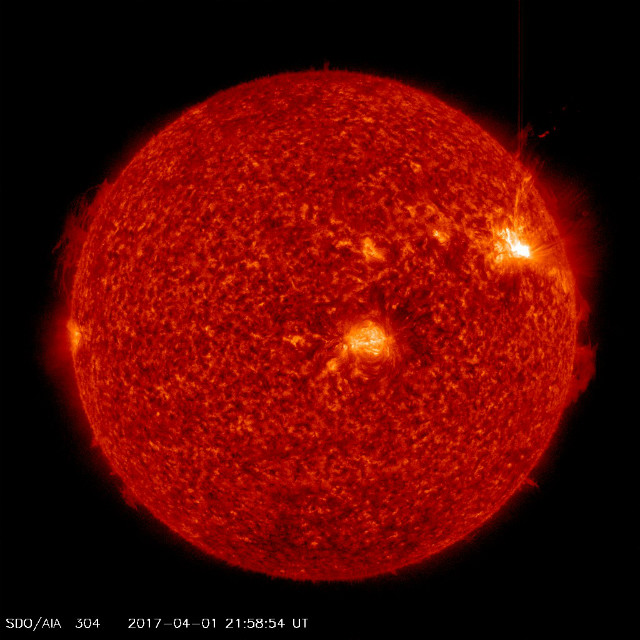
M4.4 solar flare on April 1, 2017. Credit: NASA SDO/AIA
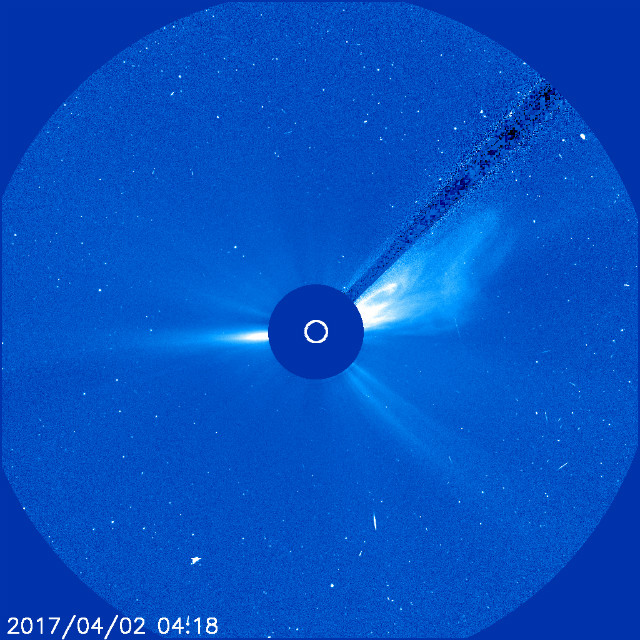
CME produced by M4.4 solar flare on April 1, 2017. Credit: ESA/NASA SOHO/LASCO C3
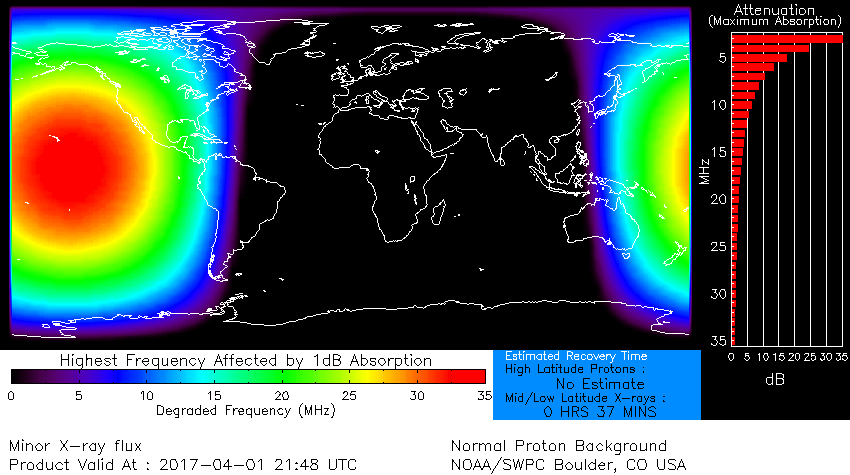
M4.4 solar flare on April 1, 2017 – D-RAP. Credit: NOAA/SWPC
Another M-class solar flare erupted from Region 2644 on April 2. This one started at 07:50, peaked at 08:02 UTC as M5.3 and ended at 08:13 UTC.
A Type IV Radio Emission was registered beginning at 08:00 UTC, indicating a strong coronal mass ejection and solar radiation storm. A Type II Radio Emission (estimated velocity 628 km/s) was registered at 08:07 UTC. Type II emissions occur in association with eruptions on the Sun and typically indicate a coronal mass ejection is associated with a flare event.
The location of this region does not favor Earth-directed CMEs.
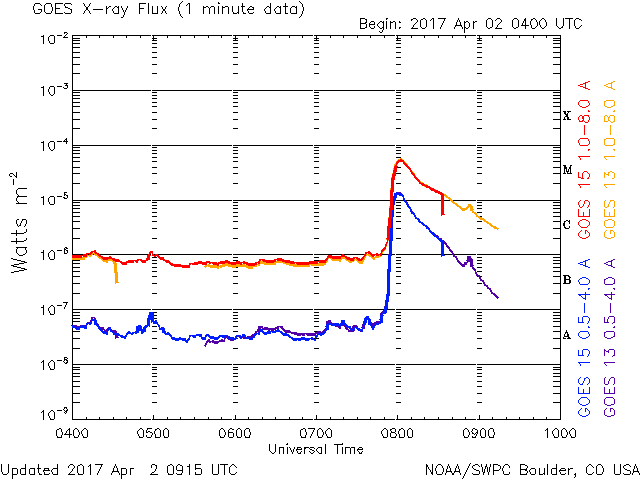
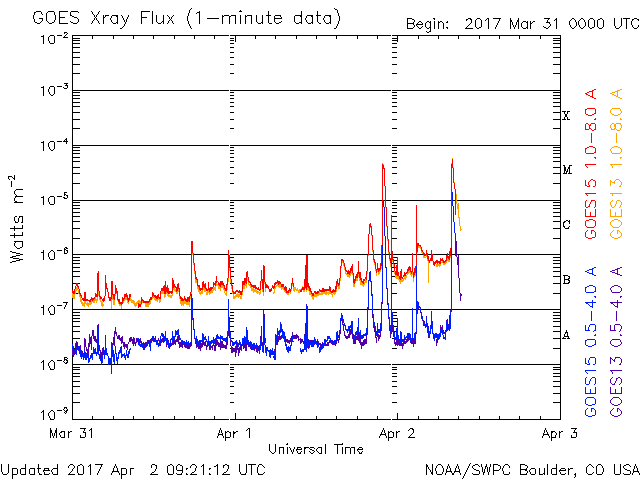
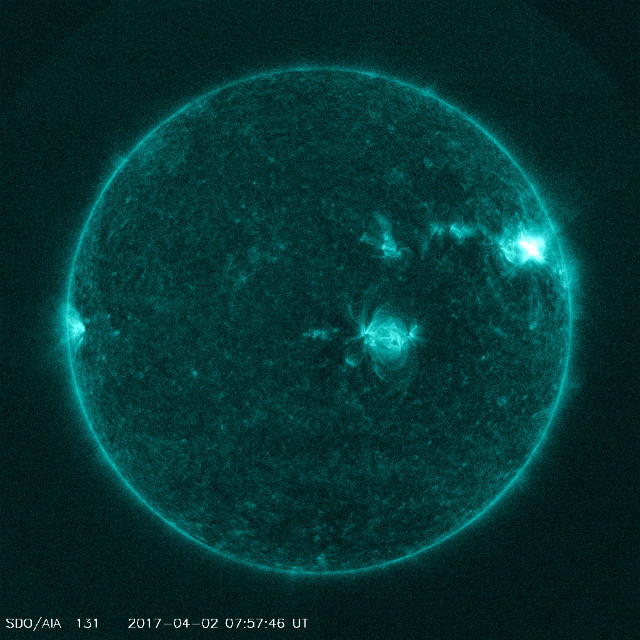
M5.3 solar flare on April 2, 2017. Credit: NASA SDO/AIA
.jpg)
M5.3 solar flare on April 2, 2017. Credit: NASA SDO/AIA
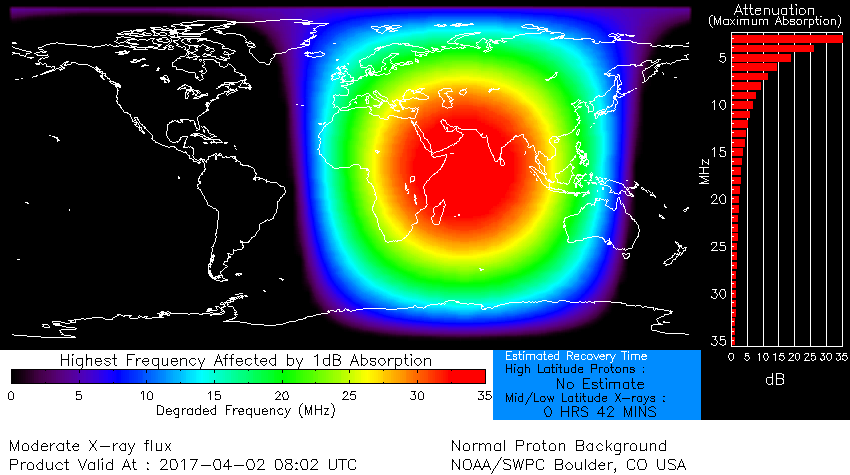
M5.3 solar flare on April 2, 2017 – D-RAP. Credit: NOAA/SWPC
The third M-class solar flare started at 12:52, peaked at 13:00 as M2.3 and ended at 13:11 UTC. The source was Region 2644.
A 10cm Radio Burst (peak flux 110 sfu) beginning at 12:56 and lasting 1 minute was associated with this event. A 10cm radio burst indicates that the electromagnetic burst associated with a solar flare at the 10cm wavelength was double or greater than the initial 10cm radio background. This can be indicative of significant radio noise in association with a solar flare. This noise is generally short-lived but can cause interference for sensitive receivers including radar, GPS, and satellite communications.
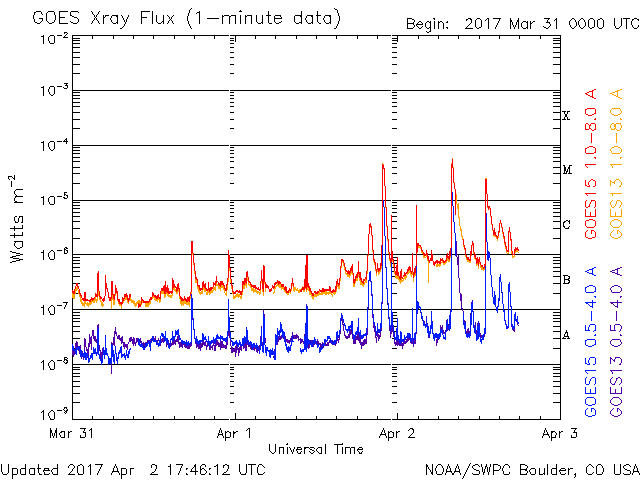
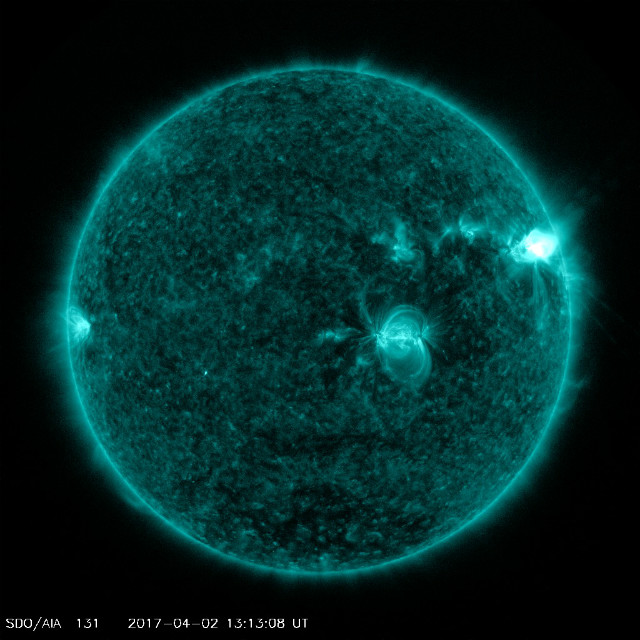
M2.3 solar flare on April 2, 2017. Credit: NASA SDO/AIA
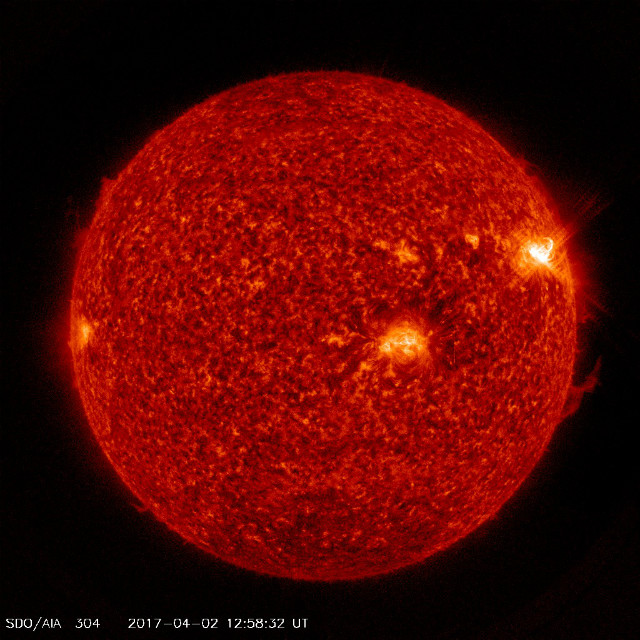
M2.3 solar flare on April 2, 2017. Credit: NASA SDO/AIA
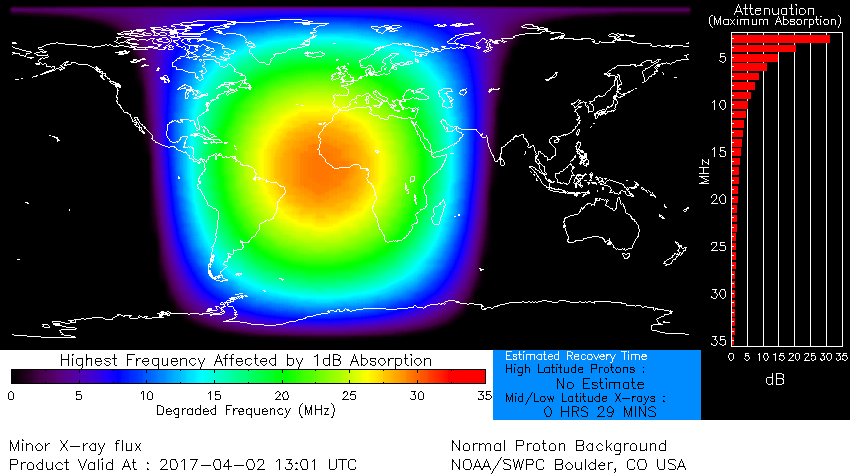
M2.3 solar flare on April 2, 2017 – D-RAP. Credit: NOAA/SWPC
A long duration M2.1 solar flare, the fourth in a series, started at 18:18, peaked at 18:33 and ended at 19:28 UTC. There were no radio signatures detected that would suggest a coronal mass ejection was produced.
At 20:33 UTC, Region 2644 erupted with fifth M-class solar flare. The event started at 20:26, peaked at 20:33 as M5.7 and ended at 20:38 UTC. It was an impulsive solar flare with associated multi-frequency discrete radio emissions and the strongest flare since M5.7 on July 23. On that day, our star erupted with three solar flares – M5.0, M7.6 and M5.5. A CME was produced during M5.5 event, but it was not Earth-directed.
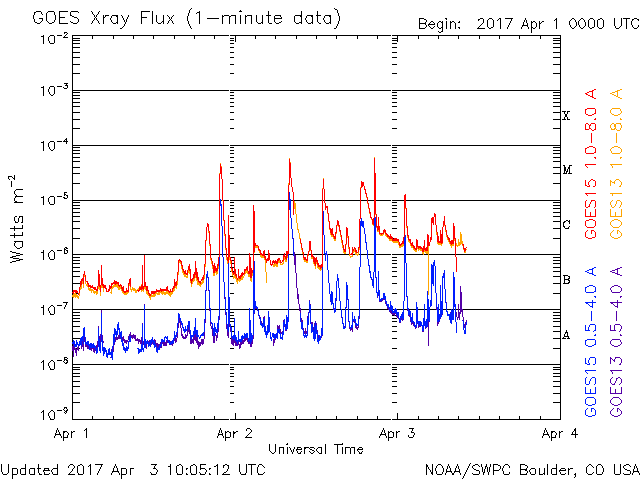
M5.2 solar flare on April 2, 2017. Credit: NASA SDO/AIA
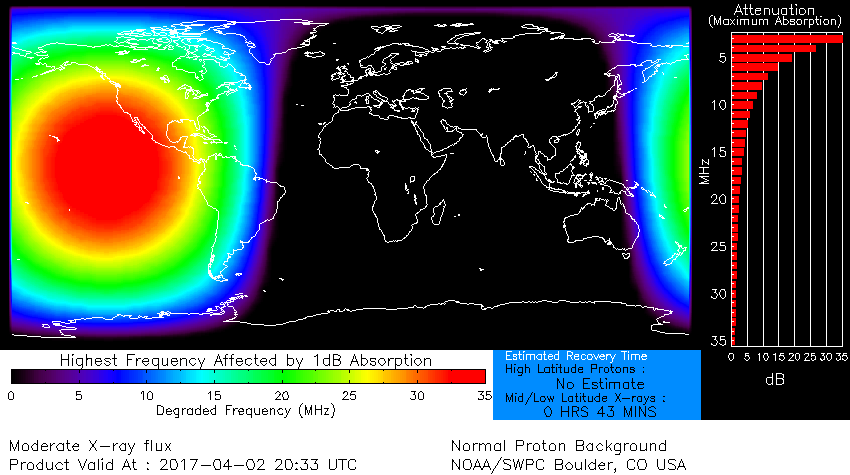
M2.3 solar flare on April 2, 2017 – D-RAP. Credit: NOAA/SWPC
The sixth solar flare in this sequence was M1.2 at 01:05 UTC. The event started at 00:56 and ended at 01:12 UTC. There were no radio signatures that would suggest a CME was produced.
Region 2644 is about to start its far side rotation but we still might see some action from it today and tomorrow.
Over the next two days (April 3 – 4), solar activity is likely to be at moderate levels with a slight chance for X-class flares. By April 5, activity levels will decrease to a chance for moderate flares with a slight chance for X-class flares due to Region 2644s departure of the visible disk on or about April 4 – 5.
Updates
A moderately strong solar flare measuring M5.8 (R2 – Moderate) erupted from Region 2644 at 14:29 UTC on April 3, 2017. The event started at 14:19 and ended at 14:34 UTC. This is the 7th and the strongest M-class solar flare since late April 1, 2017.
Read more: Moderately strong M5.8 solar flare erupts from Region 2644
Sunspots
There are currently (April 2) 4 numbered active regions on the Earth side of the Sun.
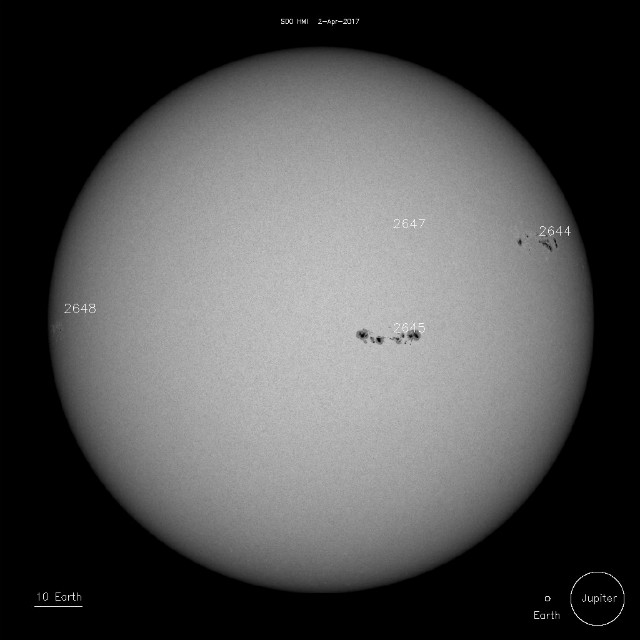
Sunspots on April 2, 2017. Credit: NASA/SDO
2644 – Beta
2645 – Beta-Gamma
2647 – Beta
2648 – Beta
Region 2644 (beta) developed additional spots to the north and west of its large leader spot resulting in a slight increase in area and spot count on April 1. The M4.4 flare appears to originate in the vicinity of the new spot growth.
Region 2645 (beta-gamma) continued to exhibit area growth, but remained relatively quiet over the past 24 hours, producing only weak B-class activity. New Region 2648 rotated onto the disk yesterday and produced a few weak B-class flares.
Since 12:00 UTC on April 2, Region 2644 showed rapid growth in area, spot count and magnetic complexity, particularly in the leader portion of the group. The region doubled in size and spot count over the past 24 hours. Region 2645 continued its growth pase, indicated by an overall increase in areal coverage. Intermetiate spot consolidation was evident, leading to a small decrease in spot count.
Sunspots on April 3
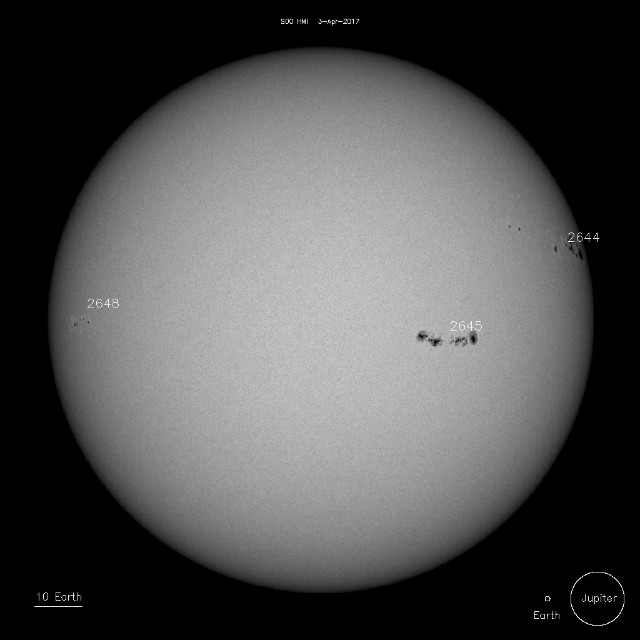
Sunspots on April 3, 2017. Credit: NASA SDO/HMI
2644 – Beta-Gamma
2645 – Beta-Gamma-Delta
2648 – Beta
Featured image: CME produced by M4.4 solar flare on April 1, 2017. Credit: NASA/SDO AIA 304

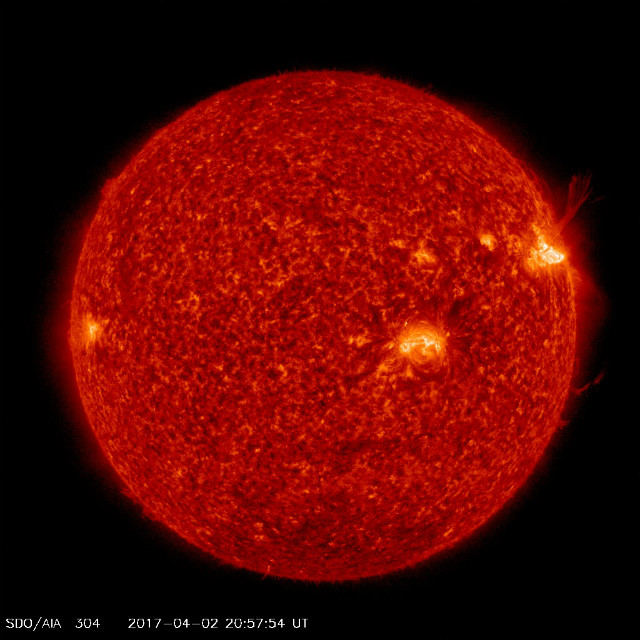
Does anyone know how animals are being affected by this? Any reports?
Thank you!
For the coronal mass ejections, yes…. Some studies suggest there is a direct connection between the Sun’s solar storms (CMEs) and human/animal biological effects.
The conduit which facilitates the charged particles from the Sun to human disturbance – is the very same conduit which steers Earth’s weather – the magnetic field. Animals and humans have a magnetic field which surrounds them – in the very same way the magnetic field surrounds the Earth as a protector.
Electromagnetic activity from the Sun affects our electronic devices and human electromagnetic field. We are physically, mentally, and emotionally altered by electromagnetic charges from the Sun, our body can feel sleepy but also become highly energized.
Psychological effects of CMEs (coronal mass ejections) are typically short lived and include headache, palpitations, mood swings, and feeling generally unwell. Chaotic or confused thinking, and erratic behaviors also increase. Solar storms can drive our emotions and maximize it to both good and bad side – the point here is to be aware of it.
The pineal gland in our brain is also affected by the electromagnetic activity which causes the gland to produce excess melatonin, a hormone which can cause sleepiness but it’s also known that some people have opposite side effects, usually those that are aware of the effects.